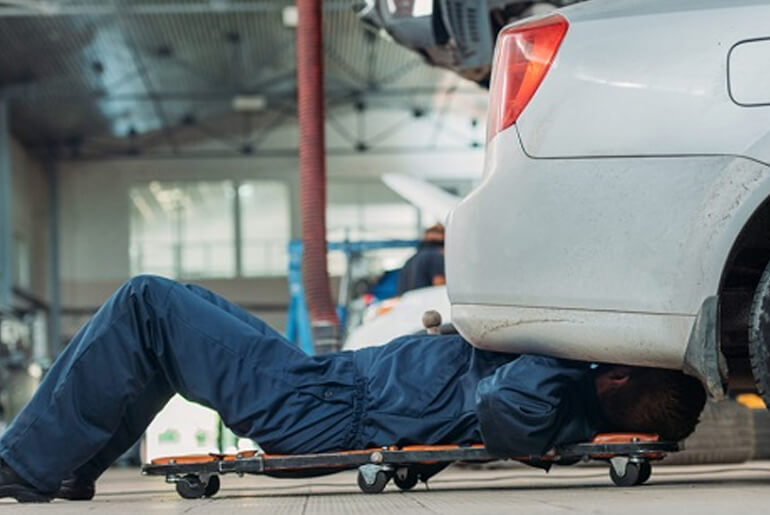Regular car maintenance could be the difference between a well operating
vehicle or a hefty mechanical bill down the track.
We’ve put a list of tips and tricks together to help keep your car
healthy and running optimally. By doing easy things like checking the
oil,
windscreen wipers and tyre pressure you’ll feel more confident while
driving your car.
1. Check your radiator and cooling system
Caution: Never remove the radiator cap when the engine is hot. Let it
cool for a few hours to avoid injury.
A quick check of the radiator coolant is as easy as looking at the level
in the plastic overflow bottle of most cars. The coolant level should be
in between the high and low markings.
Once the engine has cooled, you can remove the radiator cap and check
the level in the radiator, too. If the level is low, top it up with the
coolant recommended by the vehicle manufacturer.
If your car is regularly losing coolant, there may be a leak somewhere
that could be a sign of a bigger problem which needs professional
assessment.
Stains could indicate a leak, and any soft, kinked, swollen or cracked
hoses should be replaced by a reputable workshop.
2. Check your engine oil regularly
It’s important to check your engine oil at least once a month. Problems
with your oil can be easily missed if you leave it too long and can
cause expensive damage to your engine. Here’s how to do it:
Park your car on level ground
Start the engine, let it run for a short time, then turn it off
While the engine is warm, remove the dipstick and wipe it clean with a
clean cloth or paper towel. Reinsert the dipstick – make sure it’s
fully inserted, otherwise you’ll get a false reading
Remove the dipstick and check the oil level. It should be in between the
low and high markings. If the oil level is low, top up your oil but
first check the owner’s manual for the correct oil grade. Don’t
start the engine if there isn’t any oil on the dipstick! An engine
with no oil can seize and be extremely expensive to fix.
3. Check your tyres
Checking your tyre pressure and general condition can help extend their
use and makes your car safer overall. Don’t forget to also check the
spare.
Incorrect tyre pressure can reduce the life of your tyres and may make
your car less safe to drive. The correct tyre pressure for your car is
located on the tyre placard, which is usually found inside one of the
front doors. If you can’t find it, check the owner’s manual.
It’s also important to check the tread of all your tyres. Also check
your tyres for abnormal wear and damage such as cracks or bulges, which
could indicate a suspension problem.
4. Checking car battery condition
Caution: Your battery is potentially dangerous, so don’t check it near a
naked flame or a lit cigarette. Batteries produce an explosive gas when
they charge, and the fluid inside is corrosive, so avoid any contact
with your eyes, skin, clothing and painted surfaces.
Checking your battery every so often can save you from the inconvenience
of an unexpected flat. You can regularly take a look and by doing so,
increase it’s lifespan and be confident your car will start every time.
If your battery has caps, remove them and check that the fluid inside is
deep enough that the plates within are fully immersed. Some batteries
without removable caps have an indicator on the outside of the case to
let you quickly check battery health. The top of the battery should be
clean and dry and the terminals should be free of corrosion, which can
be in the form of a white or bluish substance.
If your car is taking longer than usual to start, or if you know your
battery hasn’t been changed in a long time, it’s worth investing in
a battery charger.
5. Transmission and power steering fluids
Low transmission and power steering fluid could indicate a bigger
problem with your car, such as a leak, so you should be aware of how to
check them. The right way to check your power steering and transmission
fluid level differs between makes and models – you can find out how in
the owner’s manual.
If there is a problem, you should take your car to the workshop for a
proper diagnosis and fix as quickly as possible.
6. Checking your headlights, tail-lights and indicators
Working lights are not only important for yours and others safety, it’s
also the law. Test your indicators and headlights often, including the
high beams –
your car’s reflection in a glass shop front or on a wall can be useful
if you don’t have someone to help you test the reverse and brake
lights.
7.Keep an eye out for warnings
Besides the dashboard warning lights, there are other signs your car may
need some maintenance.
You will need to visit a mechanic as soon as possible if:
A dashboard warning light remains on
You feel any unusual vibrations
The temperature gauge reads hot
You hear any unusual noises
The oil pressure gauge reads low
The car has a tendency to wander or steer to one side
You experience any abnormalities when braking.
You should also take your car to the dealership workshop if it:
A)Uses more fuel or oil than usual
B)Is difficult to start
C)Runs roughly
D)Leaves oil or coolant on the driveway
E) Has a smoky exhaust.

